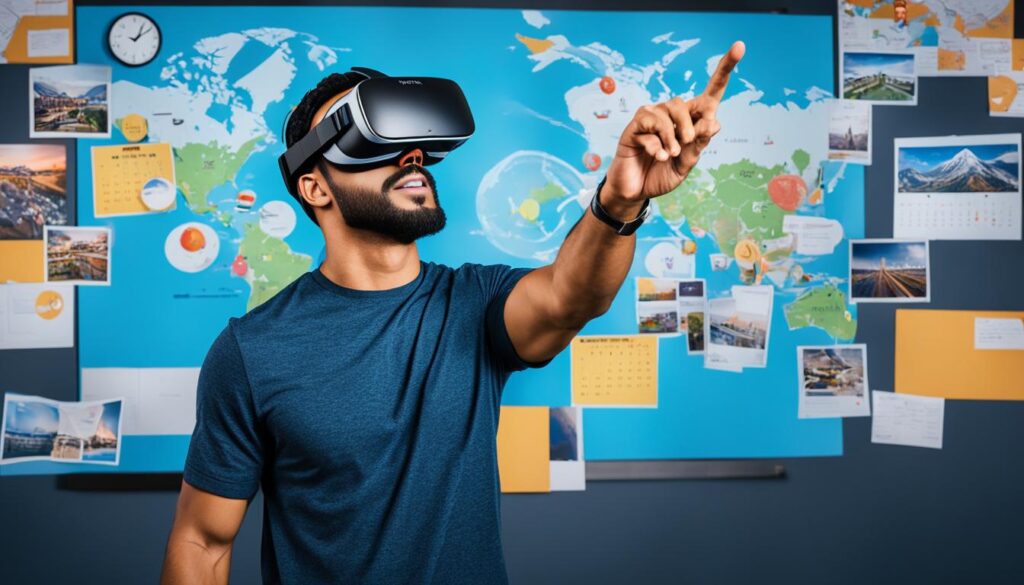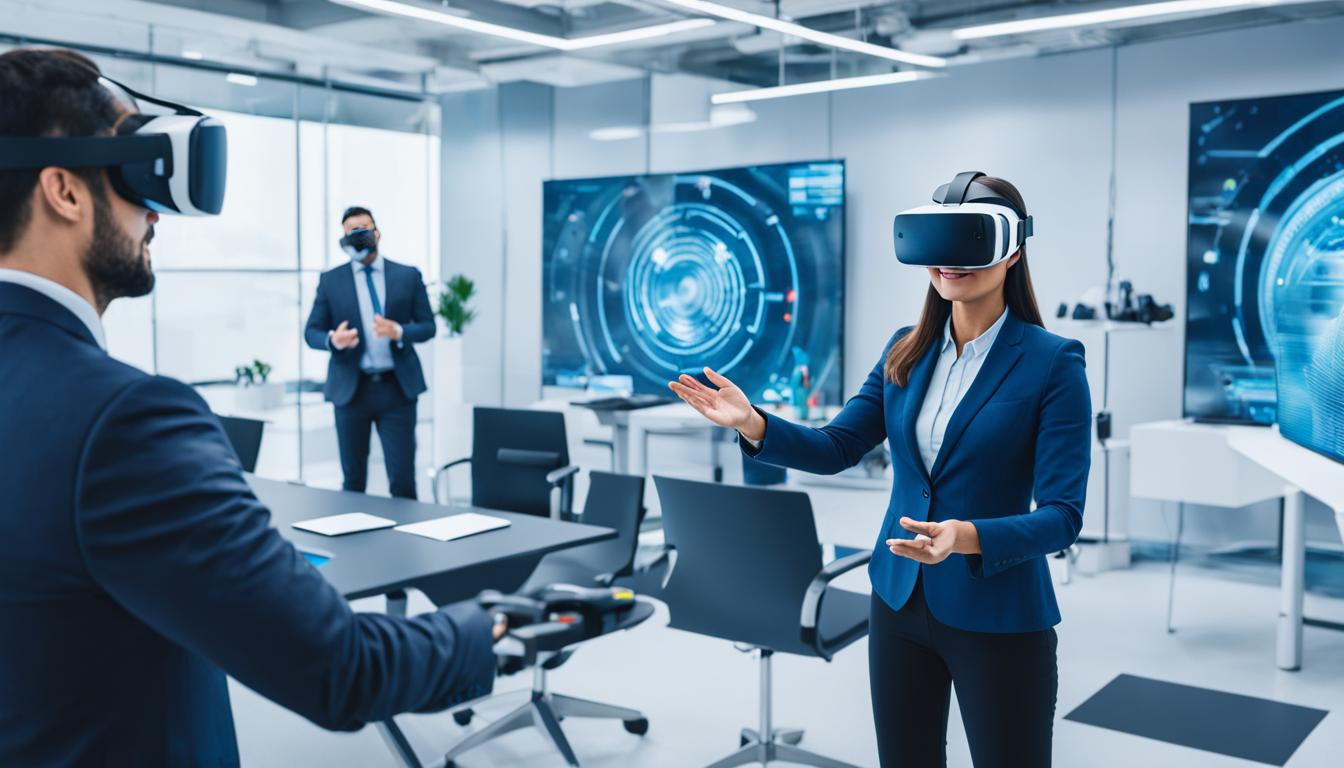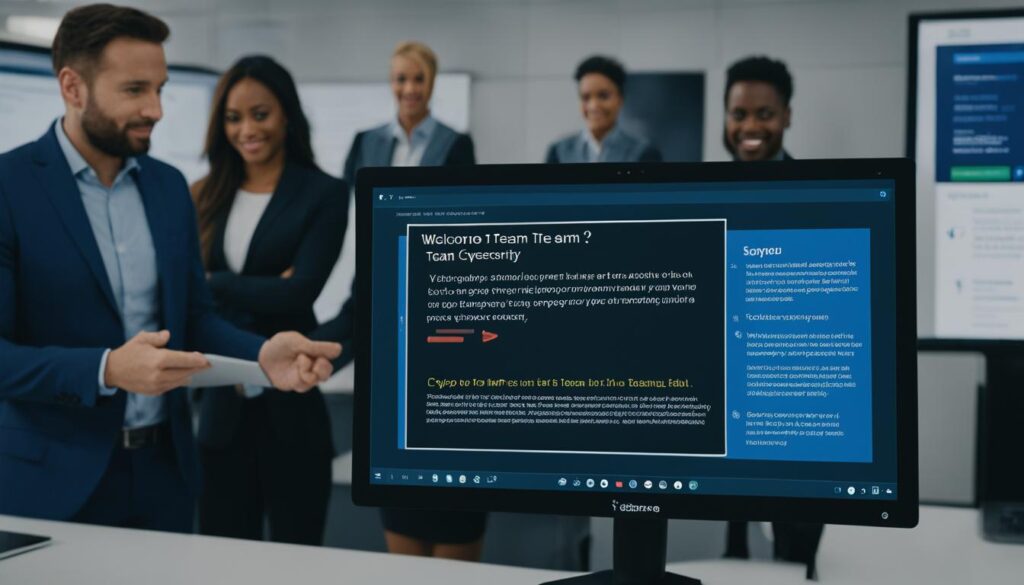In the wake of the COVID-19 pandemic, companies have had to adapt their hiring and onboarding practices to accommodate remote work. Virtual reality (VR) can be a powerful tool in creating an effective onboarding program for new hires. By leveraging VR technology, employers can provide immersive onboarding experiences that engage and educate employees from anywhere in the world. In this article, we will explore the steps to create a virtual reality onboarding program and the benefits it offers.
Key Takeaways
- Virtual reality onboarding offers immersive experiences for new hires.
- Using technology effectively is crucial for a successful VR onboarding program.
- Designing a strategic orientation schedule enhances the virtual onboarding experience.
- Regular communication and support are essential for remote employees.
- Engaging new employees fosters a sense of connection and boosts satisfaction.
Step 1: Use Technology Effectively
When it comes to creating a successful virtual reality onboarding program, one of the first steps is to leverage VR technology effectively. By utilizing the right hardware and software, you can provide new hires with a seamless and immersive onboarding experience.
To begin, ensure that you have the necessary VR equipment and headsets in place for your employees. This hardware will enable them to participate in virtual meetings and training sessions with ease. Additionally, make sure that the software you choose is user-friendly and compatible with your virtual reality system.
An essential aspect of using technology effectively is providing easy access to important documents and forms. Consider creating digital versions of benefit enrollment forms and other paperwork, allowing new hires to complete them conveniently in a virtual setting. This not only streamlines the onboarding process but also reduces the reliance on physical paperwork.
By embracing VR technology and optimizing the use of hardware and software, you can lay a solid foundation for an engaging and efficient virtual reality onboarding program.
- Identify the necessary hardware and software for a seamless onboarding experience.
- Provide employees with VR equipment and headsets for virtual meetings and training.
- Create digital versions of important documents, such as benefit enrollment forms.
Step 2: Design an Orientation Schedule
Once you have identified the necessary technology and tools, the next step in creating a virtual reality onboarding program is to design an orientation schedule that ensures a smooth transition for new hires. An effective orientation schedule goes beyond a one-time event and takes a strategic, long-term approach to help new employees acclimate to their roles and the company culture.
To design a comprehensive virtual orientation program, it is important to strike the right balance between online meetings and self-paced learning. By incorporating virtual meetings into the schedule, new hires can have the opportunity to interact with key stakeholders, ask questions, and build relationships with their colleagues. These meetings can be conducted using virtual meeting platforms that allow for seamless communication and collaboration.
Additionally, creating training videos can enhance the virtual orientation experience by providing new employees with detailed information about company policies, procedures, and expectations. Training videos can be accessed at any time, allowing new hires to review key information at their own pace. Ensure that the videos are informative, engaging, and visually appealing to hold the attention of your audience.
Incorporating detailed agendas into the orientation schedule is also crucial. A well-structured agenda provides a roadmap for new employees, outlining the topics that will be covered and the goals for each session. This helps to keep the orientation program organized and ensures that all essential information is communicated effectively.
By designing a thoughtful and comprehensive orientation schedule that includes virtual meetings, training videos, and detailed agendas, you can create an immersive virtual orientation experience that equips new employees with the knowledge and resources they need to succeed in their roles.

Benefits of a well-designed orientation schedule:
- Improved engagement and participation
- Clear understanding of company goals and expectations
- Enhanced integration into the company culture
- Increased knowledge retention through self-paced learning
- Opportunities for collaboration and networking
Step 3: Communicate Often
During the onboarding process, effective communication is crucial, especially for remote employees. Regular check-ins and open lines of communication help new hires feel supported and connected from a distance. By establishing a culture of frequent communication, companies can ensure that remote employees receive the guidance and support they need.
To promote communication and foster connections, it is beneficial to assign each new hire a buddy or point of contact within the organization. This individual can serve as a mentor and resource, helping the new employee navigate the virtual workplace and answer any questions they may have.
Furthermore, providing a comprehensive “who-to-turn-to list” can be immensely helpful. This document should include the names and contact information of key individuals in various departments who can assist with specific tasks or provide guidance. Having easy access to this information empowers new hires to seek assistance whenever needed.
In addition to regular check-ins and a designated support system, frequent one-on-one meetings with managers should be a priority. These meetings enable managers to provide valuable feedback, address any concerns, and align expectations. Creating a safe space for open dialogue and active listening fosters trust and engagement.
Setting clear performance expectations from the beginning is equally important. By establishing specific goals and objectives, remote employees can focus on their priorities and contribute effectively to the organization. Regularly communicating these expectations and providing constructive feedback helps remote employees understand how their work impacts the overall success of the company.
Effective communication, regular check-ins, a who-to-turn-to list, frequent one-on-one meetings, and clear performance expectations are all essential components of a successful onboarding process for remote employees.

Step 4: Focus on Engagement
Engaging new employees is crucial for a successful onboarding program. To foster a sense of belonging and connection, companies can implement various strategies that encourage active participation.
Start virtual meetings by posing engaging discussion questions that prompt employees to share their thoughts and ideas. This not only encourages everyone to participate but also helps new hires feel valued and included from the start.
Another effective way to boost team interaction is by organizing virtual happy hours. These informal gatherings provide an opportunity for employees to relax and socialize outside of work-related discussions. Encouraging coworkers to join with video can further enhance the sense of connection and create a more engaging atmosphere.
In addition, small rewards or incentives can be used to motivate socialization and collaboration among new hires. Recognizing their efforts and achievements, even in a virtual setting, can create a positive and motivating environment. Whether it’s a virtual gift card or a public acknowledgment, these small gestures can go a long way in fostering team camaraderie and encouraging active participation in the onboarding process.
Please review the text and let me know if you need any further assistance.
FAQ
What is virtual reality onboarding?
Virtual reality onboarding is a process of utilizing VR technology to provide immersive and engaging experiences for new employees during the onboarding process. It allows companies to create virtual environments where new hires can learn about the company culture, policies, and job responsibilities.
How can virtual reality enhance the onboarding experience?
Virtual reality can enhance the onboarding experience by creating interactive and immersive scenarios that simulate real-life work situations. It allows new employees to learn and practice their job skills in a safe and controlled environment, increasing knowledge retention and engagement.
What hardware and software are needed for virtual reality onboarding?
The hardware required for virtual reality onboarding usually includes VR headsets and controllers. The software can vary depending on the specific onboarding program but typically includes VR content creation tools, virtual meeting platforms, and training modules.
How can companies ensure effective communication with remote employees during virtual reality onboarding?
Companies can ensure effective communication with remote employees by establishing regular check-ins, assigning a point of contact or buddy for support, and providing managers with tools and training for remote communication. Clear performance expectations should also be set from the start to facilitate successful communication.
Can virtual reality onboarding help with employee engagement?
Yes, virtual reality onboarding can help with employee engagement. By creating interactive and social experiences such as virtual meetings, virtual happy hours, and team interactions, companies can foster a sense of belonging and connection among new employees, leading to increased engagement and satisfaction.




